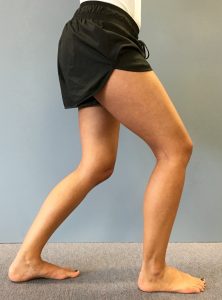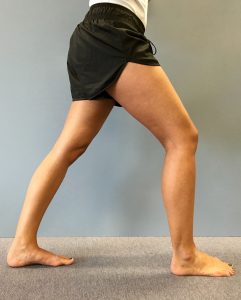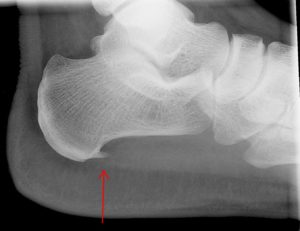1. Depression, anxiety, and stress in people with and without Plantar heel pain
M Cotchett, SE Munteanu, KB Landorf – Foot & Ankle International, 2016
Why I like it: This case-control study builds on a case series by the same lead author, which investigated psychological factors and their association with plantar heel pain. The relationship between musculoskeletal conditions and psychological factors has been evaluated in other body regions, especially lower back pain, however there is scant data on the relationship with plantar heel pain. Given plantar heel pain has been described as a self-limiting condition, it is important to understand how this condition can affect a person’s overall health, which will assist in developing more appropriate treatment in the future.
Take home message: People experiencing plantar heel pain have elevated levels of depression, anxiety and stress symptoms, compared to those without plantar heel pain. Therefore, plantar heel pain can affect other domains of a person’s health, and this should be a considered by clinicians when providing treatment programs.
DH Kamonseki, GA Gonçalves, CY Liu, IL Júnior – Manual Therapy, 2016
Why I like it: A few randomised trials have investigated strengthening for plantar heel pain, but they have found inconsistent results (possibly due to different strengthening protocols being provided in each trial). This trial randomised participants to three groups: stretching alone, strengthening alone, and a combined stretching and strengthening group. All three groups improved over the eight week period, and there was no significant differences between each group.
Take home message: A self-stretching program was as effective as strengthening and combined stretching and strengthening over eight weeks. Based on this trial, selecting an approach that meets the goal of the patient (i.e. the patient prefers to increase strength or prefers to increase flexibility) may be equally effective.


D Celik, G Kuş, SÖ Sırma – Foot & Ankle International, 2016
Why I like it: This comparative randomised trial investigated whether a corticosteroid injection or joint mobilisation and stretching were more effective for plantar heel pain. Importantly, this trial had a 1 year follow-up, which I think is important when conducting trials involving corticosteroid injections.
Take home message: Between baseline and 12 weeks, a corticosteroid injection was more effective at reducing pain and improving function. However, mean pain increased in the corticosteroid injection group and was similar to the joint mobilisation and stretching group between 12 weeks and the 1 year follow-up. The short-term effectiveness of corticosteroid injections in this trial is similar to past trials that have investigated corticosteroid injections for plantar heel pain. What is lacking, is a clear understanding of the long-term effects of corticosteroid injections in those with plantar heel pain, which is important for health practitioners when making treatment decisions.
F Eslamian, SK Shakouri, et al. – Pain Medicine, 2016
Why I like it: This is another comparative randomised trial that compared five sessions of radial extracorporeal shockwave therapy to a single corticosteroid injection. The authors found no difference between groups for pain and function over the eight week trial. Previous randomised trials that have compared these treatments have found contrasting results.
Take home message: This trial adds to the body of knowledge comparing the effectiveness of extracorporeal shockwave therapy and corticosteroid injections. The evidence indicates contrasting findings between a benefit for corticosteroid injections (from two trials), versus no difference in effectiveness (from two trials). Based on the similar effectiveness of the two interventions in this trial, taking a patient-centered approach that includes treatment preference, cost and possible adverse effects may result in greater satisfaction with treatment.
5. Relationship and classification of plantar heel spurs in patients with plantar fasciitis
J Ahmad, A Karim, JN Daniel – Foot & Ankle International, 2016
Why I like it: The relationship between plantar heel spurs and plantar fasciitis is unclear, and this study aimed to clarify this ambiguity by classifying the types of plantar heel spurs and their relationship with plantar fasciitis. The authors were able to classify spur shape into four categories: absent (24%); horizontal (61%); vertical (4%); and hooked (12%). They also classified spurs based on size to < 5 mm, 5-10 mm, and > 10 mm.

Take home message: The authors found that people with hooked or horizontal spurs, and those with spurs larger than 5 mm, had better outcomes regarding pain and function. This suggests that bigger spurs do not equate to a worse prognosis. These results may assist health practitioners when providing education to patients regarding the course of their plantar heel pain.

